Understanding India’s Climate and Seasons: When is the Best Time to Visit?
“When is the best time to visit India to experience its vibrant culture, stunning landscapes, and unforgettable festivals?”
India is a place of contrasts, hence the timing of your journey there may make all the difference in the world. Planning your vacation to India depends on your having a strong awareness of the seasons of that nation. This is true whether your dream is of lounging on Goa’s beaches, traversing the snow-capped Himalayas, or losing oneself in Delhi’s turmoil. Having stated that, let us now get into the details so that we may help you decide when would be the best time for your trip to India.
Why Timing Is Crucially Important
India’s vast geography and varied topography mean that the temperature in different areas of the nation can vary somewhat significantly from one another. If you schedule your trip in the suitable season, you will be able to maximize your vacation, avoid bad weather, and take advantage of nice temperature. Furthermore, timing your travel to coincide with a festival or other event will give your journey extra magical quality.
India’s Climate Zones
The climate of India may be mostly divided into four main zones:
a. Northern Plains: On the Northern Plains, the monsoon season is somewhat short; the summers are hot, the winters are chilly. b. Himalayan Region: The “Himalayan Region” is distinguished by profuse snowfall, cold winters, and cool summers. c. Western Desert: The Western Desert boasts warm winters and very hot summers. d. Southern Peninsula: Hot summers and strong monsoon rains define the tropical Southern Peninsula’s climate. “Southern Peninsula”
Your awareness of these zones will help you to organize where and when to travel.
India’s Four Main Seasons
1. Winter (November through February)
- Temperature: Generally speaking, the temperature ranges of the cold and pleasant weather from 10 degrees Celsius to 25 degrees Celsius.
- Best for: Sightseeing, celebrating, and outdoor activities.
- Notable characteristics:
- Visit the Golden Triangle—which comprises Delhi, Jaipur, and Agra—free from heat.
- Festivities like Christmas and Diwali abound in vitality and enthusiasm.
- Highly advised are visits to Goa’s beaches or the backwaters of Kerala.
- Packing: Be sure to include warmer evening attire and light layers for the afternoon.
2. Summer (March through June)
- Temperature: Regarding the temperature, the weather is hot and dry; plains often see temperatures above forty degrees Celsius.
- Best for: Hill stations, early morning excursions, and inside activities are the greatest sites to visit.
- Notable Characteristics:
- Plan your vacation among one of the hill stations, including Ooty, Manali, or Shimla.
- You should be ready for the strong heat if you wish to see Rajasthan deserts.
- Either early in the morning or late in the evening will help you to avoid the heat of the day.
- Packing: Among the must-packed items are a hat, sunscreen, and lightweight, airy clothes.
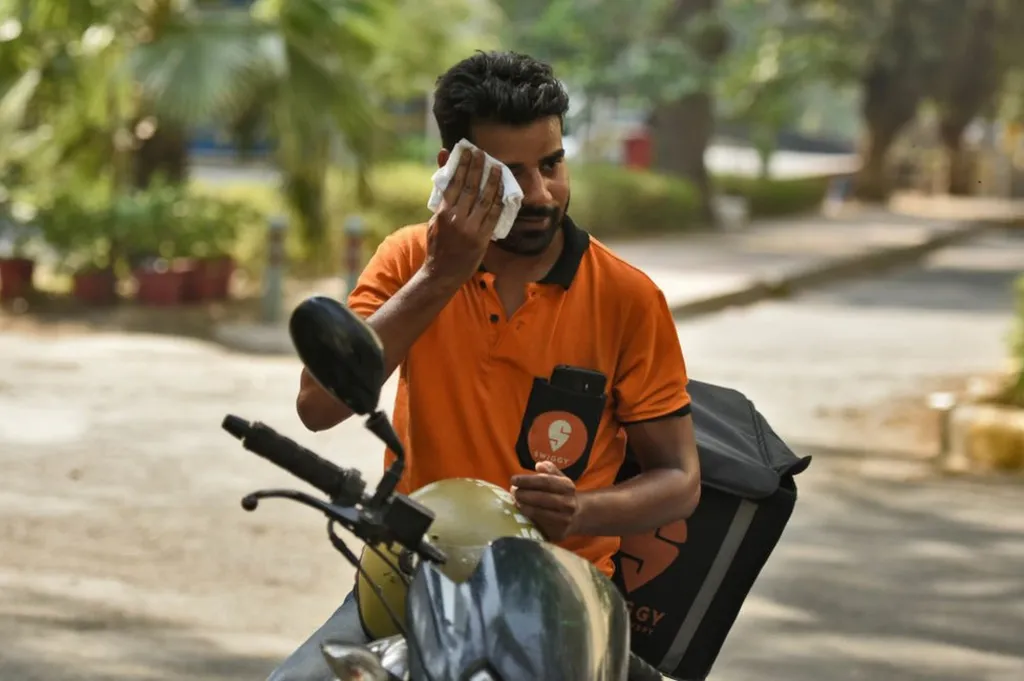
3. Monsoon (July through September)
- Precipitation: Particularly in the central and coastal areas, precipitation will be somewhat high.
- Best for: Reasonably priced travel, fewer tourists, and gorgeous scenery.
- Notable characteristics:
- Explore the verdant, rich splendor found in Kerala’s backwaters.
- See the waterfalls in Maharashtra’s and Karnataka’s states.
- Use lowered rates for lodging and flights.
- Packing: Pack waterproof gear, fast-drying clothes, and sturdy shoes among other waterproof items.
4. Post-Monsoon (October and November)
- Weather: The skies are clear and the temperature is moderate and comfortable.
- Best for: Celebrations, outdoor activities, and picture taking.
- Notable Characteristics:
- See Kolkata’s Durga Puja festival in all its beauty.
- Before the winter falls, go on some Himalayan sightseeing.
- Appreciate the post-monsoon vegetation in national parks.
- Packing: Keep light clothes and suitable walking shoes among your packing items.
Regional Weather Variations
North India
- Winter: Traveling to cities such Delhi, Jaipur, and Agra is rather handy throughout the winter.
- Summer: Summertime visits to hill stations including Shimla and Mussoorie are fantastic.
- Monsoon: The plains will see lots of rain throughout the monsoon, but the mountains will remain lovely.
South India
- Winter: Beachfront, backwaters, and historical monuments are the ideal locations to explore in winter.
- Summer: Hot and muggy; coastal regions are rather cooler than most of the nation.
- Monsoon: Though it rains a lot, the monsoon season is distinguished by rich and lovely scenery.
The Tibetan Himalayan Region
- Winter: Ladakh and Himachal Pradesh are great locations for winter snowboarding and skiing.
- Summer: Hiking and visiting high-altitude sites all throughout the world find perfect timing in the summer.
- Monsoon: The potential of landslides and road closures makes the monsoon season best avoided.
West India
- Winter: Traveling to Mumbai, Goa, and Gujarat best is in the winter.
- Summer: Summer is quite hot; coastal regions are rather better than others around the nation.
- Monsoon: While the monsoon season brings expected heavy rain, Goa’s beaches will be less packed.
East India
- Winter: The greatest destinations in the winter are Kolkata, Darjeeling, and Odisha.
- Summer: Summertime hot and muggy; highland stations like Darjeeling are cooler at this season.
- Monsoon: Though the monsoon season brings lots of rain, the greenery is rather amazing.
Season-Specific Travel Guidelines
- Winter: Particularly during holidays, make sure you arrange your lodging and transportation ahead of time in the winter.
- Summer: Drinking lots of water, avoiding outside activities when the temperature is highest, and timing your activities for early morning hours are especially crucial during the summer.
- Monsoon: During the monsoon season, make sure to check the weather prediction, pack waterproof gear, and adapt your plans.
- Post-Monsoon: Take advantage of the nice temperature and schedule events outside following the monsoon.
Detailed Food Suggestions and Travel Notes
Making the perfect travel schedule for India can seem like an impossible chore since this country offers countless opportunities. Not to fear, though; we have you covered very perfectly! Whether this is your first vacation or you are an experienced traveler of many years, the accompanying thorough itineraries, culinary suggestions, and budget advice will help you to maximize your trip. Considering your tastes, let’s look at the best time of year to visit India.
5-Day Golden Triangle Itinerary (North India)
Day 1: Arriving in Delhi
- Early morning exploration of Old Delhi’s busy streets—including the Red Fort and Jama Masjid—is yours.
- See the Qutub Minar and the Tomb of Humayun in the afternoon.
- Perfect for a leisurely walk around Connaught Place and a taste of some mouthwatering street cuisine is Chandni Chowk.
- Culinary suggestions: Taste kulfi, chole bhature, and butter chicken.
Day 2: Agra
- Watching the early sunrise is best done near the Taj Mahal.
- Visit Mehtab Bagh and the Agra Fort afternoon.
- Go shopping in the neighborhood markets in the evening in search of handcrafts and souvenirs.
- Culinary suggestions: Mughal empire’s cuisine and the sweet treat known as petha.
Day 3: Jaipur
- Go to the Amber Fort first thing in morning and tour the region on an elephant.
- In the afternoon, view the City Palace and the Hawa Mahal.
- For evening shopping for textiles and jewelry, head to Johari Bazaar.
- Culinary suggestions: Ghewar and dal baati churma.
Day 4: Pushkar (Optional Excursion)
- Visit the Brahma Temple and Pushkar Lake first thing today morning.
- Take a camel safari and afternoon shopping trip to the neighborhood marketplaces.
- Make sure you are there since the evening aarti will take place by lake.
- Culinary suggestions: Malpua and thali cuisine.
Day 5: Return to Delhi
- Early on in the morning, head back to Delhi.
- In the afternoon, unwind or go shopping for some last-minute needs.
- You will leave in the evening with lifetime of memories.
7-Day Itinerary: Kerala and Tamil Nadu (South India)
Day 1: Kochi
- This morning you ought to visit Fort Kochi and the Chinese Fishing Nets.
- Afternoon at the Mattancherry Palace and the Jewish Synagogue is worthwhile.
- See a Kathakali show in the evening before bed.
- Dietary guidelines: Kerala fish curry and appam with stew.
Day 2: Munnar
- Morning drive (four hours) to Munnar.
- Afternoon sites: Eravikulam National Park and tea estates.
- Evening: Relax in your resort and go easy.
- Culinary suggestions: Kerala parotta and beef fry.
Day 3: Alleppey
- Early morning drive (five hours) to Alleppey.
- Afternoon: backwater trip on a houseboat.
- Evening: Enjoy real Kerala cuisine on the boat and enjoy the peace of view.
- Delicacies: Karimeen pollichathu and banana fritters.
Day 4: Madurai
- Early morning flight (five hours) to Madurai.
- Afternoon: Meenakshi Amman Temple.
- Late evening: shopping at neighborhood markets.
- Dietary guidelines: Salna parotta with jigarthanda.
Day 5: Rameshwaram
- First thing in the morning: Ramanathaswamy Temple.
- Afternoon exploration: Dhanushkodi Beach.
- Evening: rest and relaxation beside the sea.
- Culinary suggestions: South Indian thali and seafood meals.
Day 6: Kanyakumari
- Early morning drive (three hours) to Kanyakumari.
- Afternoon sites: Thiruvalluvar Statue and Vivekananda Rock Memorial.
- Evening: see the sunset at the southernmost tip of India.
- Local treats: Locally accessible desserts and banana chips.
Day 7: Return to Kochi
- Early morning drive (eight hours) back to Kochi.
- Afternoon: relax or keep exploring Kochi.
- Evening: Depart with memories-filled heart.
4-Day Itinerary for Ladakh (Himalayan Region)
Day 1: Leh
- Morning: Arrive in Leh and adjusting to the high altitude.
- Afternoon: Leh Palace and the Shanti Stupa.
- Late evening: Visit Leh Market.
- Cuisine: Thukpa and momos.
Day 2: Nubra Valley
- Morning: Drive via Khardung La Pass to Nubra Valley.
- Afternoon: Diskit Monastery and camel safari across the sand dunes.
- Evening: Spend evening under the stars in a tent.
- Dietary recommendations: Ladakhi thukpa and butter tea.
Day 3: Pangong Lake
- Morning: Drive four hours to Pangong Lake.
- Afternoon: Wander down the lake’s beach and enjoy the amazing surroundings.
- Evening: Spend evening in a campsite beside the lake.
- Local cuisine: Sample Ladakhi food endemic to the region.
Day 4: Return to Leh
- Early morning: Drive six hours back to Leh.
- Afternoon: Relax or go memento buying.
- Evening: Depart with lifetime of memories.
Budget Breakdown (INR)
| Trip Duration | Lodging (INR) | Food (INR) | Transportation (INR) | Activities (INR) | Total (INR) |
|---|---|---|---|---|---|
| North India (5 Days) | 10,000 | 5,000 | 8,000 | 5,000 | 28,000 |
| South India (7 Days) | 15,000 | 7,000 | 10,000 | 6,000 | 38,000 |
| Ladakh (4 Days) | 8,000 | 4,000 | 6,000 | 5,000 | 23,000 |
Attractions Comparison
| Attractiveness | Price | Best Visiting Hours | Experiences You Definitely Should Get Your Hands On** |
|---|---|---|---|
| Taj Mahal, Agra | INR 1,300 | Dawn or Sunset | Guided tour, photography |
| Kerala Backwaters Houseboat | INR 2,000 | Morning | Houseboat trip |
| Pangong Lake, Ladakh | INR 500 | Afternoon | Camping and wandering along the lake |
| Meenakshi Temple, Madurai | INR 50 | Early morning | Temple tour, photography |
Key Travel Advice&Notes
Having organized your schedule, packed your baggage, and gotten set to travel, you are ready to start your trip to India. But let’s review some crucial tips before you depart to ensure your trip is one you will never forget, safe, and runs without hiccups. This part will teach you everything from cultural etiquette to packing advice, so guiding you across India like a master. Here is all you need to maximize the most unforgettable experience during the ideal time to visit India.
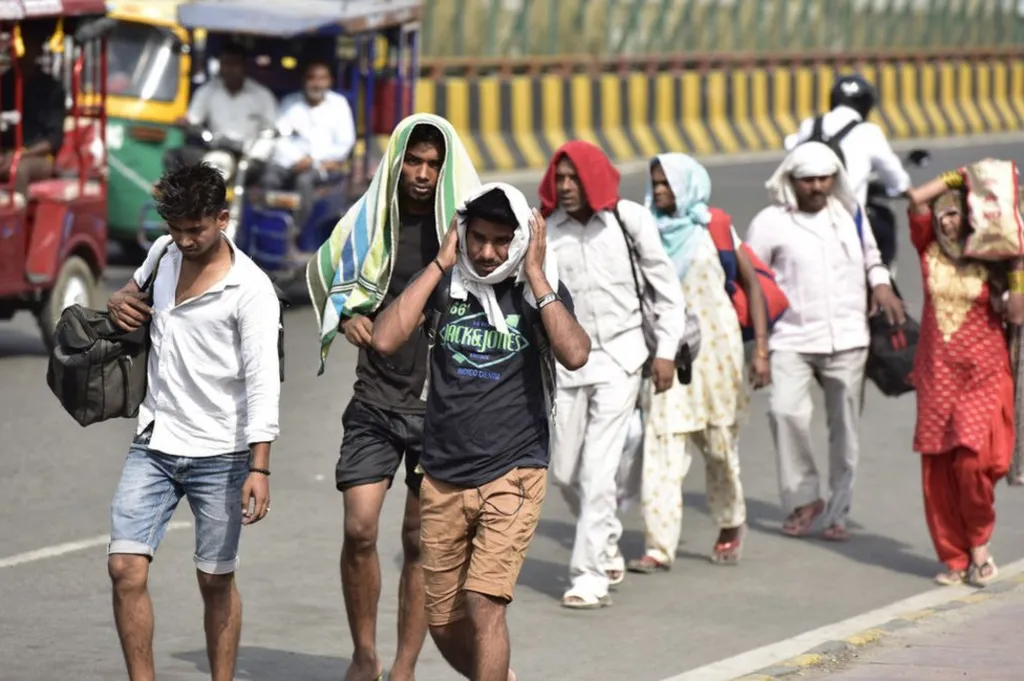
Last Travel Advice
1. Packing Hints
Season-Independent Essentials:
- Winter: You should outfit in thick layers, thermals, and a decent jacket for the winter.
- Summer: Summer apparel should be lightweight, airy, and breathable; sunscreen, a hat, should also be part of it.
- Monsoon: Outfits waterproof, fast drying clothing, and robust shoes for a monsoon.
- Post-Monsoon: You should pack light clothing and suitable walking shoes following the monsoon.
Essential Items:
- Power Adapter: An Indian plug is a Type C/D/M kind power adaptor running 230V.
- Reusable Water Bottle: One can find a reusable water bottle with a filter.
- First-Aid Kit: Fundamental first aid equipment and medicine.
- Document Copies: Copies of important records such a trip insurance policy, current passport, visa.
2. Words of Alert
Health Warning Notes:
- Drink just filtered or bottled water.
- If you have an easily disturbed stomach, you should avoid street food.
- Always carry moist towels and hand sanitizer.
Individual Safety:
- Con artists and touts should be avoided especially in places visited by visitors.
- Make sure your possessions are safe always; try not to flaunt pricey objects.
- Take use of reputable transportation options such Ola or Uber.
Emergency Contacts:
- Police: 100
- Ambulance: 102
- Tourist Helpline: 1363
3. Respect of Cultural Standards
Etiquette for Dress:
- Cover your knees and shoulders to have a modest look especially in a religious environment.
- Always take off your shoes before you enter private homes or churches.
- Be careful not to show public affection and consider the customs that are common in particular groups.
Greetings:
- A basic “Namaste” (meaning “hello”) or “Dhanyavaad” (meaning “thank you”) will go a lot of distance.
Packing Guidelines Comparison Table
| Season | Packing Advice |
|---|---|
| Winter | In northern areas, tempers can drop below five degrees Celsius, hence it’s crucial to pack a decent jacket, warm layers, and thermals. Comfortable walking shoes for touring places like Agra or Jaipur. A shawl, or scarf to cover head when visiting holy locations. |
| Summer | Stay clear from synthetics; lightweight, breathable cotton or linen clothes! Sunscreen with a fifty-or higher sun protection factor (SPF), a hat with a broad brim, and UV-protected sunglasses. A portable fan or a handheld misting spray for usage in crowded settings. |
| Monsoon | Electrical device dry bags and the waterproof cover for the backpacks. Quickly drying clothes and socks that wicked away moisture. A salve to stop chafing; humidity can be quite painful! |
| Post-Monsoon | Light layers are advised for the cool mornings and the nice afternoons. Hiking boots should be worn if you plan to climb Himalayan climbs. |
| Must-Have Items | India runs type C, type D, and type M (230V) plugs for power adapters. Drinking water from the tap is not safe, hence you should use a reusable water bottle with a filter. Add band-aids, antiseptic cream, anti-diarrheal drugs, altitude sickness pills to your basic first-aid collection. A green substitute for traditional toiletries are biodegradable soap and shampoo bars. |
Export to Sheets
4. Words of Advice
Sanity and Hygiene:
- Always sip water bought in a bottle or filtered from a source. Never slosh your drink with ice.
- Eat street food only at crowded stalls; rapid turnover results in fresher food. Avoid raw salads and unpeeled fruits.
- See your doctors regarding the vaccinations advised for you, such those for typhoid and hepatitis A.
Individual Safety:
- Avoid “tourist pricing” in markets since this is a typical kind of deception. You should always consult a local or negotiate if you wish fair charges.
- Apps like Ola or Uber let you hail a cab or auto-rickshaw for travel as these businesses are metered and safer.
- Those who are going alone should avoid isolated locations past evening. Your schedule should be known to someone back at home.
Digital World Safety:
- Local prepaid SIM cards from Airtel or Jio can help you to get dependable data.
- Download Google Maps or Maps.me to use offline maps if you live somewhere with bad internet.
5. Observation of Cultural Standards
Dress Etiquette:
- Entering temples and mosques, cover knees and shoulders. Some places demand guests to cover their heads (bring a scarf).
- To respect the customs of the society, one should avoid dressing in rural areas in too revealing clothes.
Interactions with Other People:
- Instead of shaking hands when greeting someone, use your hands folded and say “Namaste”.
- Before photographing people or religious events, it is very necessary in the field of photography to always get authorization.
- Using your left hand for dining, offering or receiving money, or shaking hands is deemed disrespectful. Instead, employ your right hand.
Temple Etiquette:
- Kindly remove your shoes and socks before entering.
- Feet are regarded as dirty, hence you should not point them at altars or people.
Fine Dining Customs:
- Eating with one’s hands is somewhat typical in South India. Wash your hands both before and right after meals.
- If you are invited to a local house, it shows respect to sample a bit of everything that is on offer.
Travel and Scheduling Options Comparison
| Mode of Transportation | Best Case Scenario | Travel Time | Cost | Comfort |
|---|---|---|---|---|
| Air travel | Long distances—for example, Delhi to Goa | Over two to three hours | High ($50-$150) | High (air conditioning, snacks) |
| Trains (Air Conditioning Class) | Scenic excursions (such as reaching Goa from Mumbai) | 8 to 12 hours | Moderate ($20-$80) | Moderate (berths, meals) |
| Buses (Sleeper) | Budget travel (for example, Jaipur to Udaipur) | 4–6 hours | Low ($5-$15) | Low (busy transit choices) |
| Auto-rickshaws | Short journeys within the city (say to the marketplaces in Delhi) | Ten to thirty minutes | Extremely low ($1-$3) | Basic (open-air) |
| Private Taxis | Customizable itineraries (for example, road excursions to Ladakh) | Adaptable | High ($30-$100 daily) | High (air conditioning, privacy) |
Export to Sheets
Tip: Through the Indian Railways Central Transportation Corporation (IRCTC), India’s rail website, book trains for major routes like Delhi to Agra or Mumbai to Goa at least two to three months in advance.
Final Thoughts
India is a place of contrasts; every season brings with it something quite distinct. Whether your ideal holiday is to completely enjoy the monsoon, escape the stifling heat of summer, or simply savor the warmth of the winter sun, there is always a “best time to visit India”. From the congested streets of Delhi to the serene backwaters of Kerala and the rocky Ladakh, India offers a trip unlike any other.
Knowing the seasons, organizing your vacation, and following these travel advice can help you to be ready to maximize your trip. So grab your stuff, welcome the mess, and get ready to create memories that will last the rest of your life.


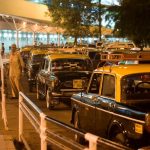
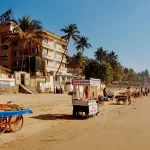
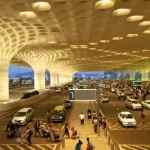
No responses yet